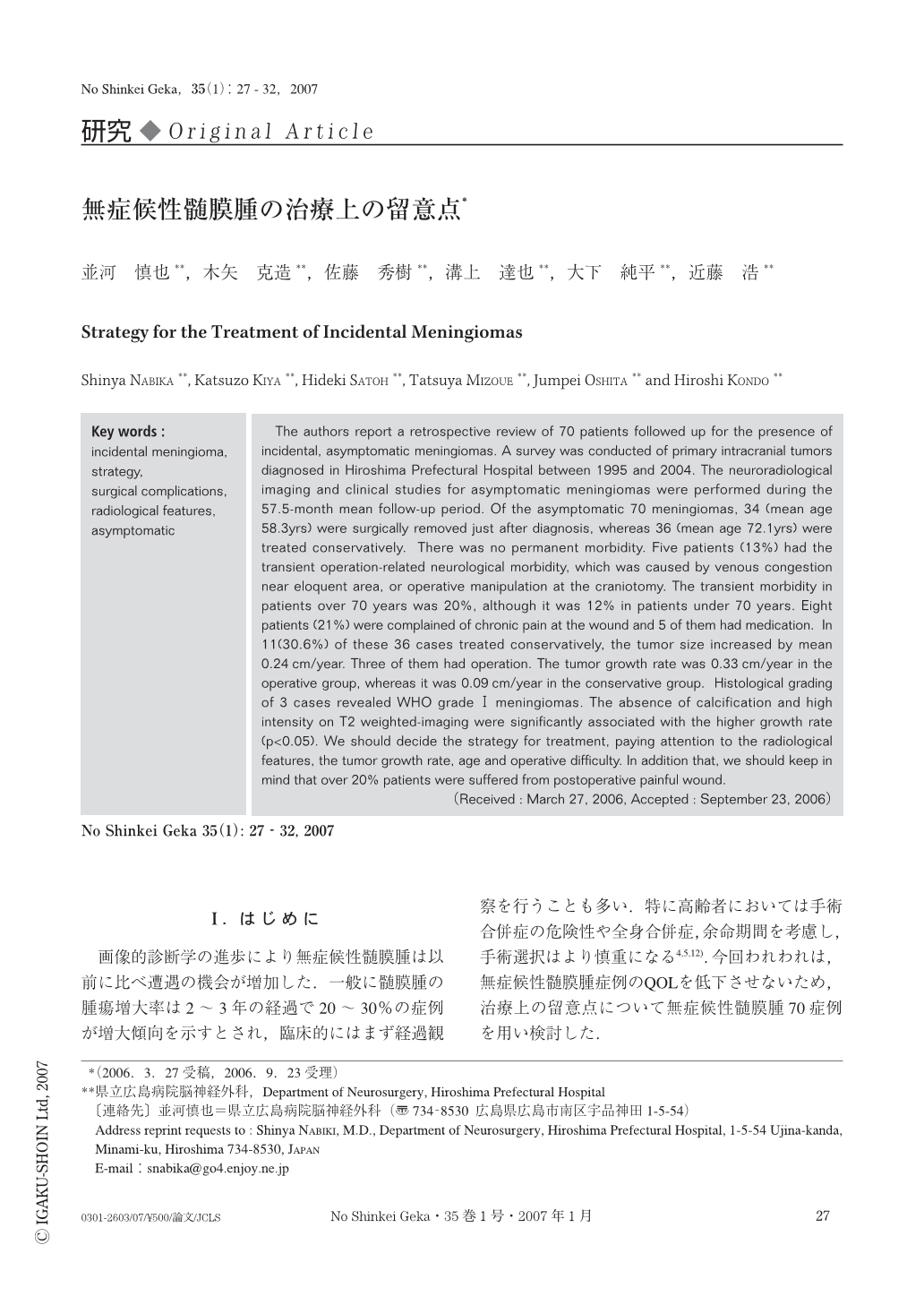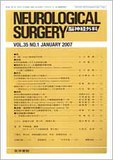Japanese
English
- 有料閲覧
- Abstract 文献概要
- 1ページ目 Look Inside
- 参考文献 Reference
Ⅰ.はじめに
画像的診断学の進歩により無症候性髄膜腫は以前に比べ遭遇の機会が増加した.一般に髄膜腫の腫瘍増大率は2~3年の経過で20~30%の症例が増大傾向を示すとされ,臨床的にはまず経過観察を行うことも多い.特に高齢者においては手術合併症の危険性や全身合併症,余命期間を考慮し,手術選択はより慎重になる4,5,12).今回われわれは,無症候性髄膜腫症例のQOLを低下させないため,治療上の留意点について無症候性髄膜腫70症例を用い検討した.
The authors report a retrospective review of 70 patients followed up for the presence of incidental, asymptomatic meningiomas. A survey was conducted of primary intracranial tumors diagnosed in Hiroshima Prefectural Hospital between 1995 and 2004. The neuroradiological imaging and clinical studies for asymptomatic meningiomas were performed during the 57.5-month mean follow-up period. Of the asymptomatic 70 meningiomas, 34 (mean age 58.3yrs) were surgically removed just after diagnosis, whereas 36 (mean age 72.1yrs) were treated conservatively. There was no permanent morbidity. Five patients (13%) had the transient operation-related neurological morbidity, which was caused by venous congestion near eloquent area, or operative manipulation at the craniotomy. The transient morbidity in patients over 70 years was 20%, although it was 12% in patients under 70 years. Eight patients (21%) were complained of chronic pain at the wound and 5 of them had medication. In 11(30.6%) of these 36 cases treated conservatively, the tumor size increased by mean 0.24cm/year. Three of them had operation. The tumor growth rate was 0.33cm/year in the operative group, whereas it was 0.09cm/year in the conservative group. Histological grading of 3 cases revealed WHO gradeⅠmeningiomas. The absence of calcification and high intensity on T2 weighted-imaging were significantly associated with the higher growth rate (p<0.05). We should decide the strategy for treatment, paying attention to the radiological features, the tumor growth rate, age and operative difficulty. In addition that, we should keep in mind that over 20% patients were suffered from postoperative painful wound.

Copyright © 2007, Igaku-Shoin Ltd. All rights reserved.


